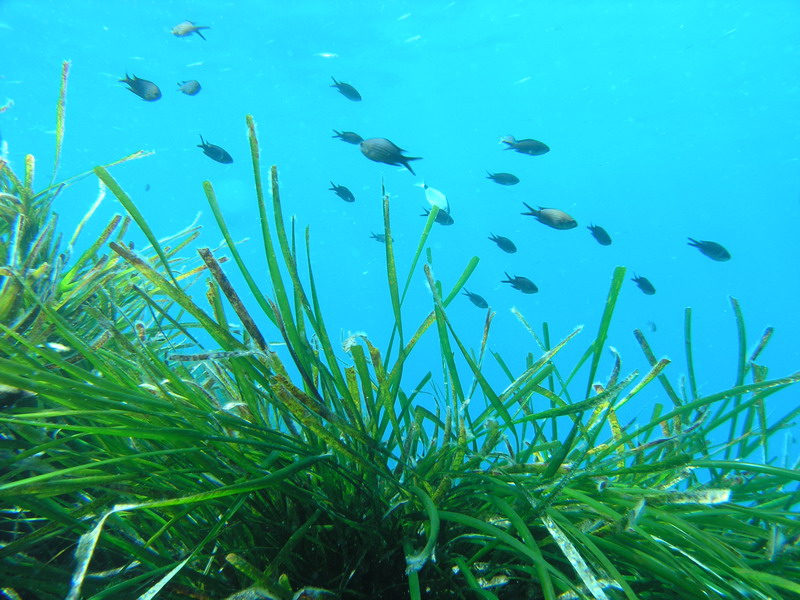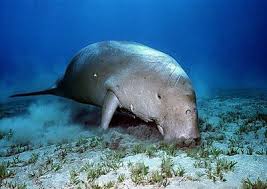Sea grass provides many benefits for the marine ecosystem. Some include:
- Sea grass provides a nursery for young fish and crustaceans. The young organisms live in the nursery until they're big enough to have a chance at survival in the open ocean. The relative safety of sea grass
meadows provides an ideal environment for juvenile fish and
invertebrates to conceal themselves from predators. Sea grass leaves
are also ideal for the attachment of larvae and eggs.

- Sea grass is a permanent habitat for many different types of epiphytes such as snails and small crustaceans. Species such as clams, worms,
crabs, and echinoderms, like starfishes, sea cucumbers, and sea
urchins, use the buffering capabilities of sea grasses to provide a
refuge from strong currents. The dense network of roots established
by sea grasses also helps deter predators from digging through the
substratum to find epfaunal prey organisms.

- Sea grass filters the water of sediment, leaving the water clearer for the coral reef the requiresunlight to live. Sea grasses help trap fine
sediments and particles that are suspended in the water column,
which increases water clarity. When a sea floor area lacks sea grass
communities, the sediments are more frequently stirred by wind and
waves, decreasing water clarity, affecting marine animal behavior,
and generally decreasing the recreational quality of coastal areas.
-

Sea grass's economic value can be
measured through other industries, such as commercial and
recreational fisheries and nature and wildlife tourism, which rely
on this habitat to survive. Since most of Florida's fishery species spend at least part of their life cycle within
seagrass communities, sea grasses are vital to the survival of these
fishing industries.

- While some organisms, including
the endangered Florida manatee and green sea turtle, graze directly
on sea grass leaves, others use sea grasses indirectly to provide
nutrients. Bottlenose dolphins are often found feeding on organisms
that live in sea grass areas. Detritus from bacterial decomposition
of dead sea grass plants provides food for worms, sea cucumbers,
crabs, and filter feeders such as anemones and ascidians. Further
decomposition releases nutrients,
which, when dissolved in water, are re-absorbed by sea grasses and
phytoplankton.





No comments:
Post a Comment